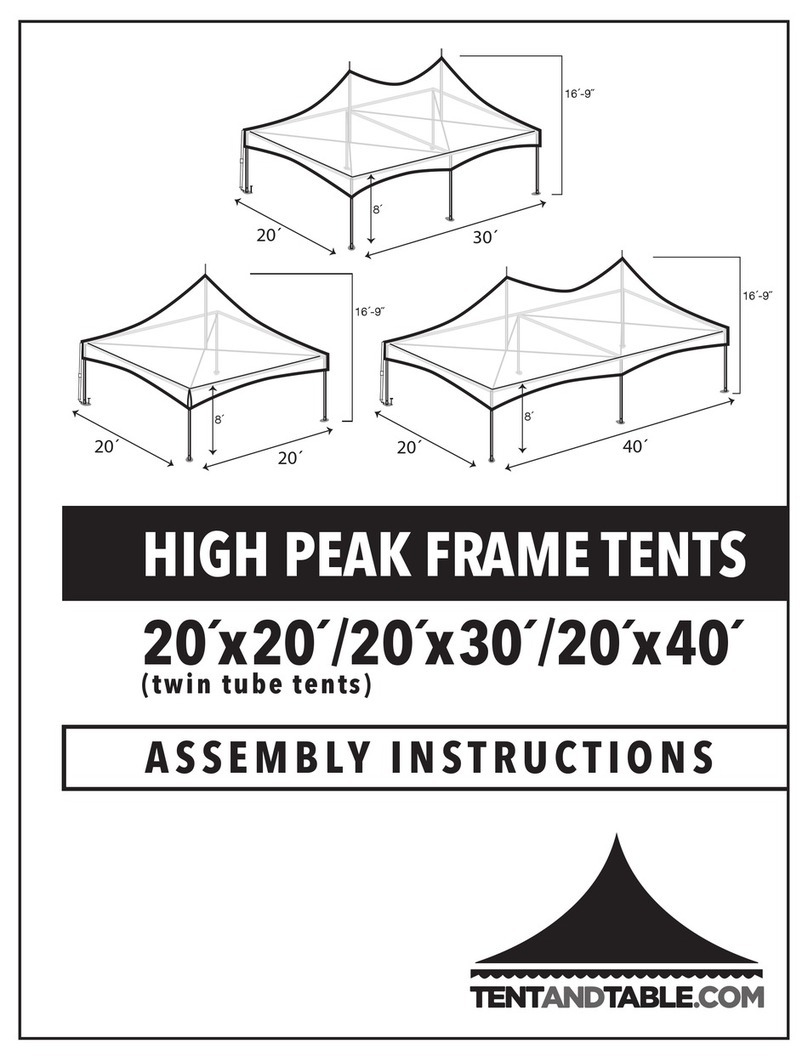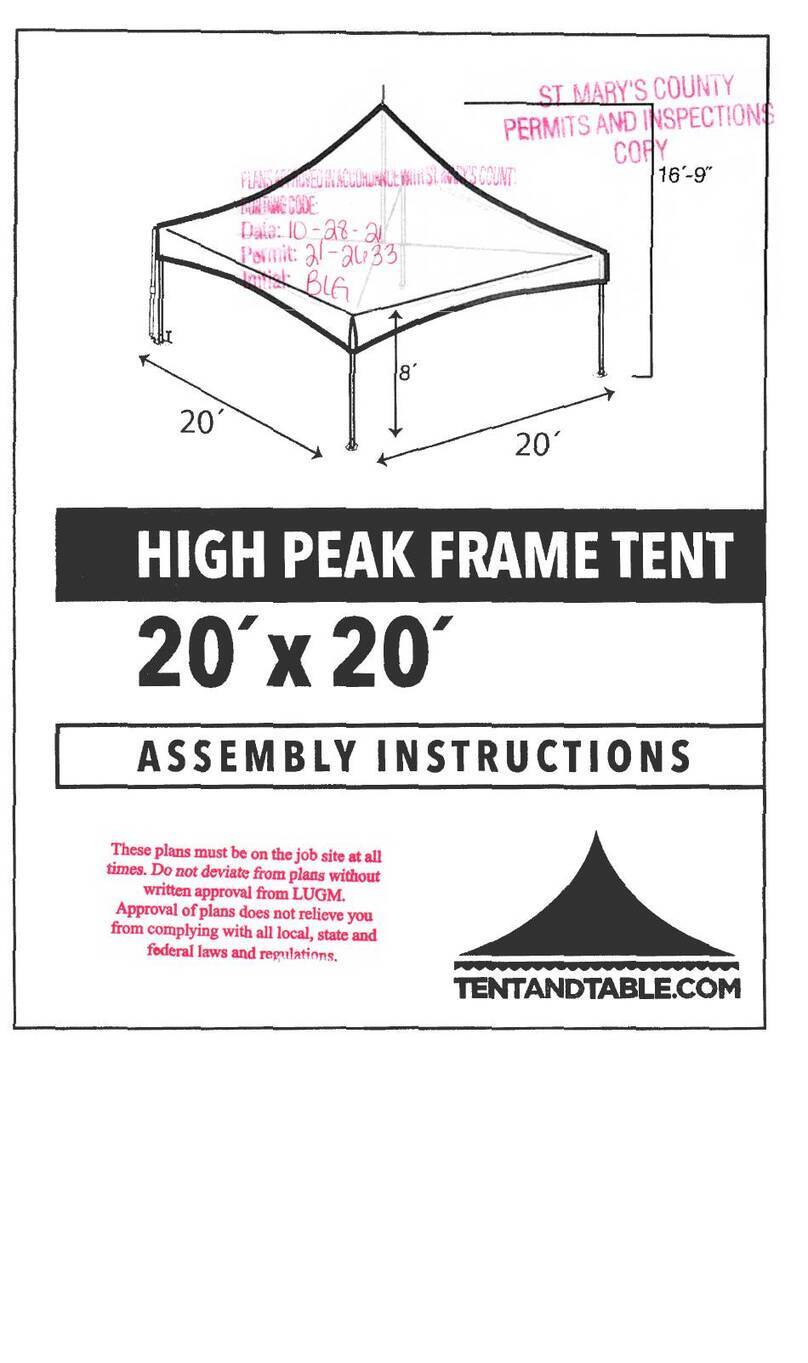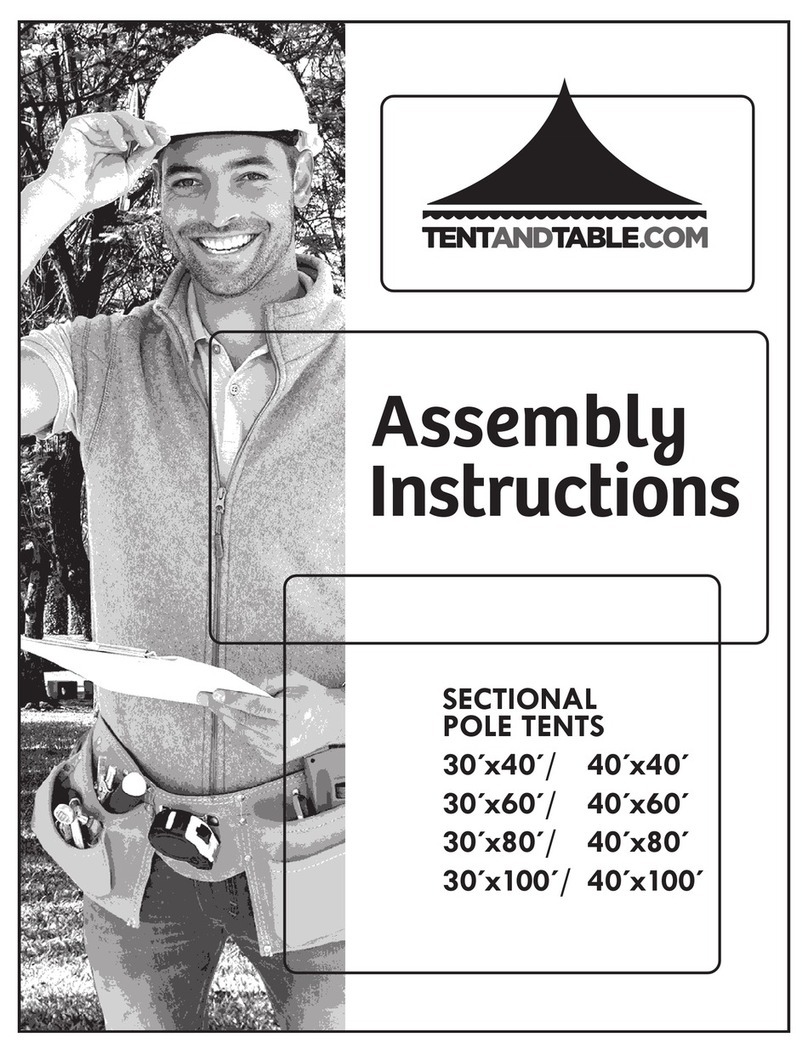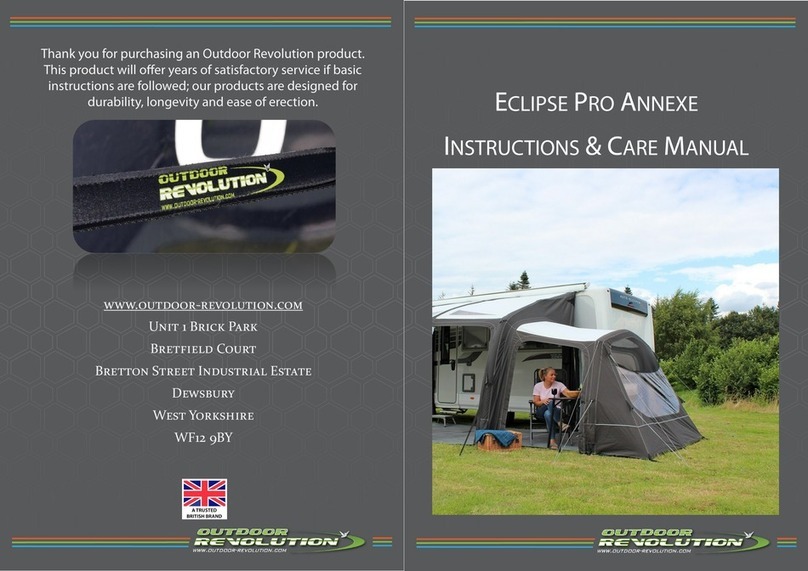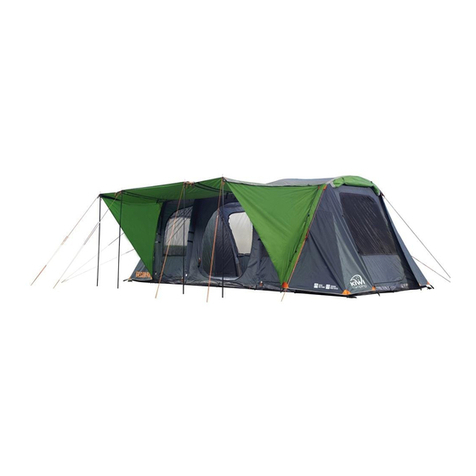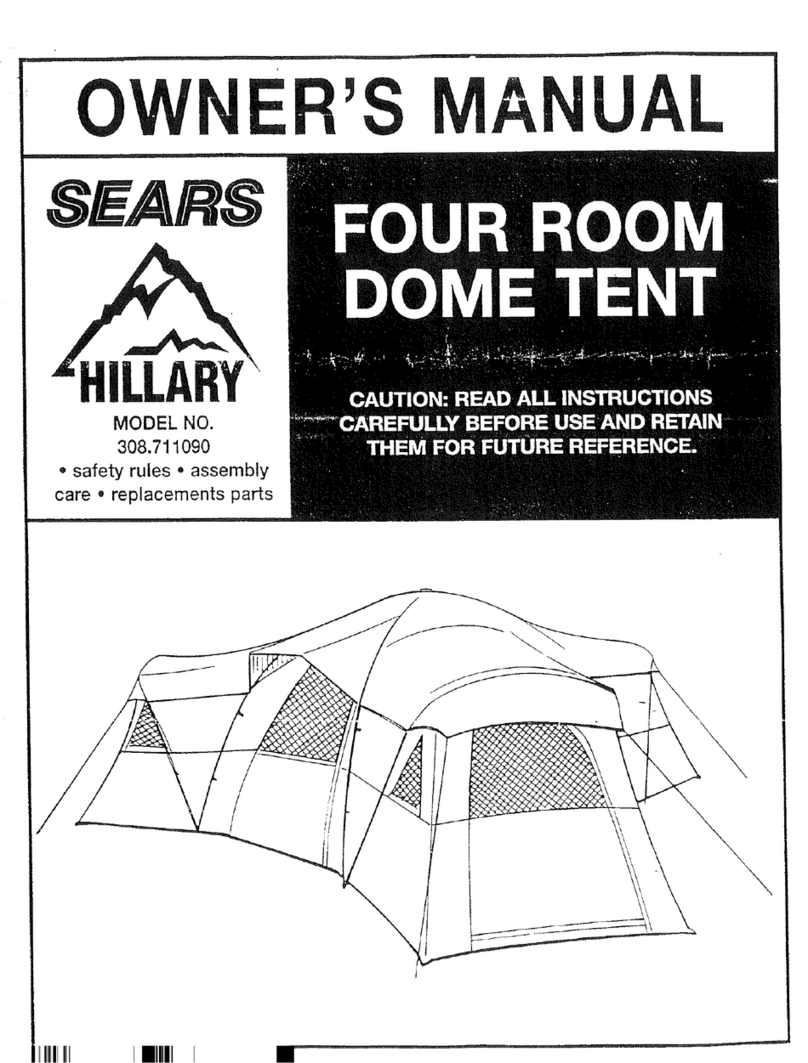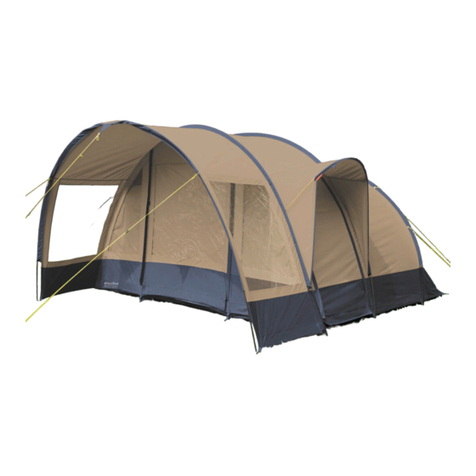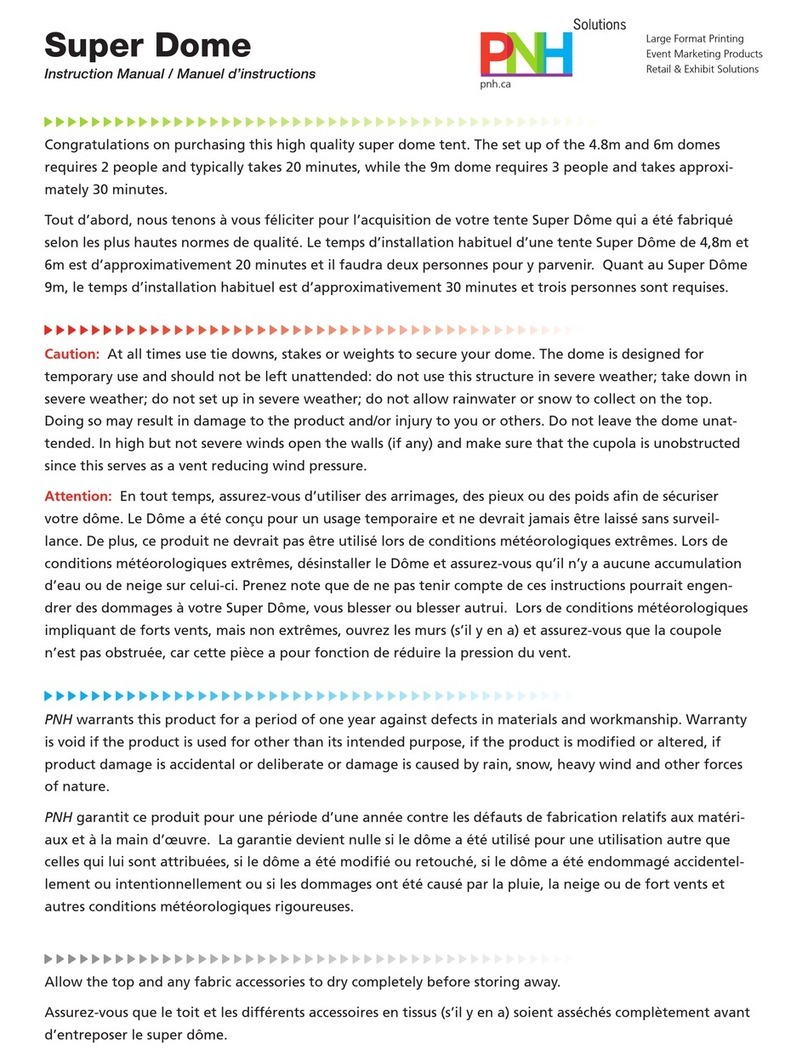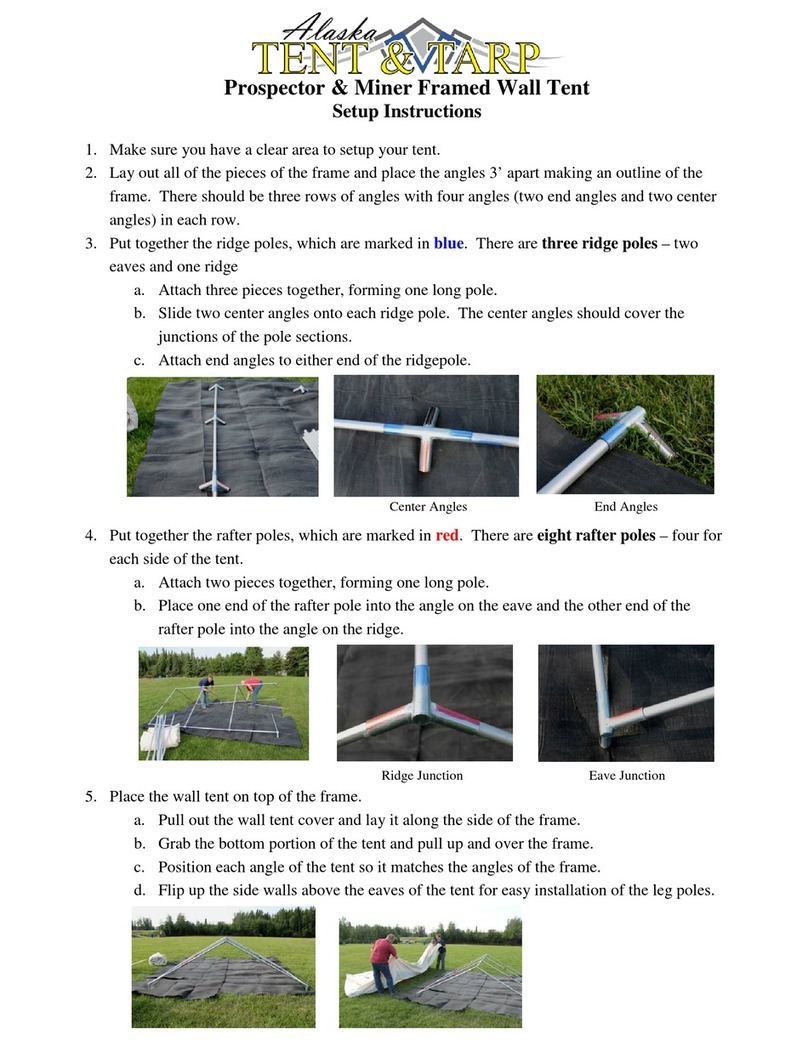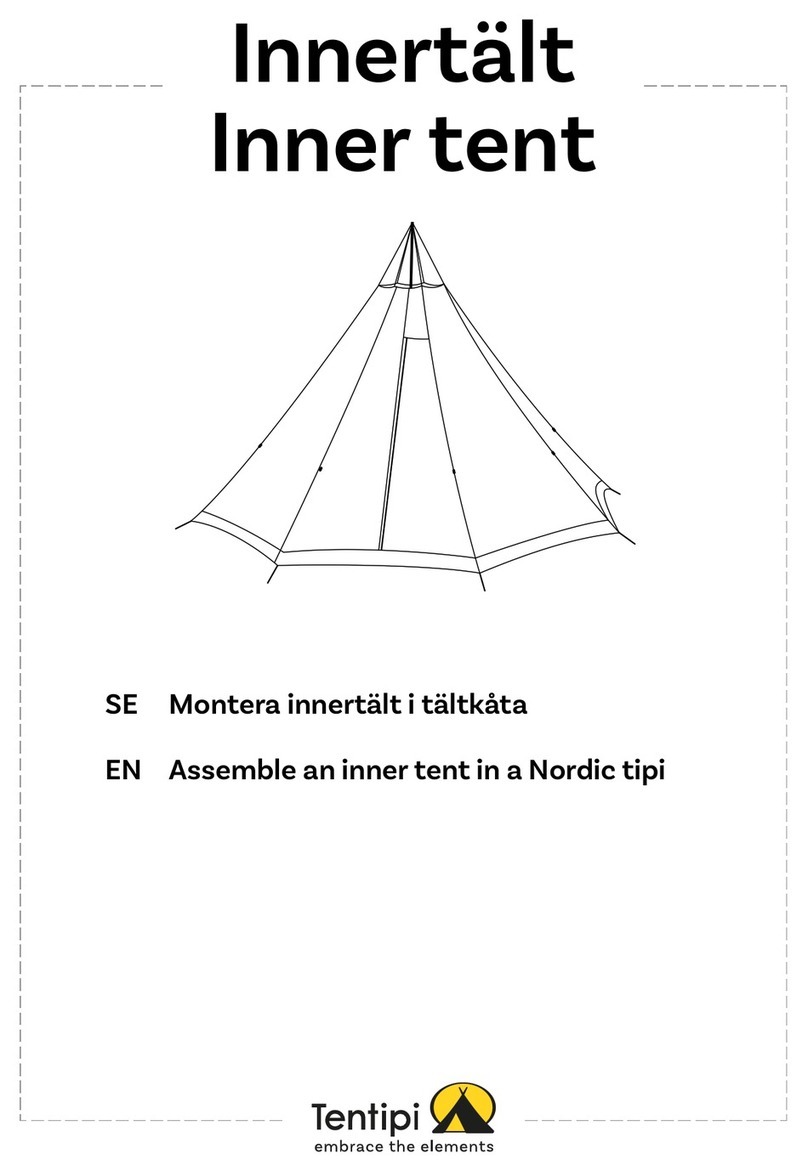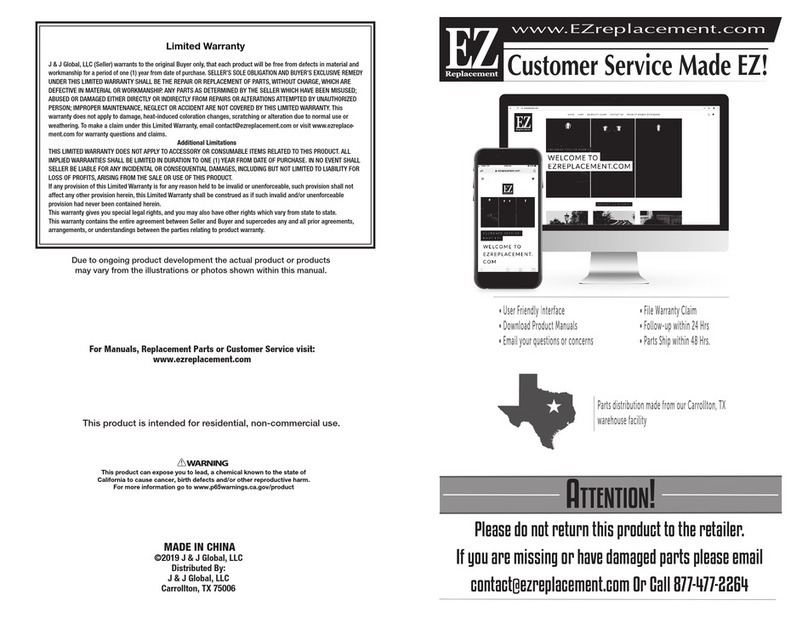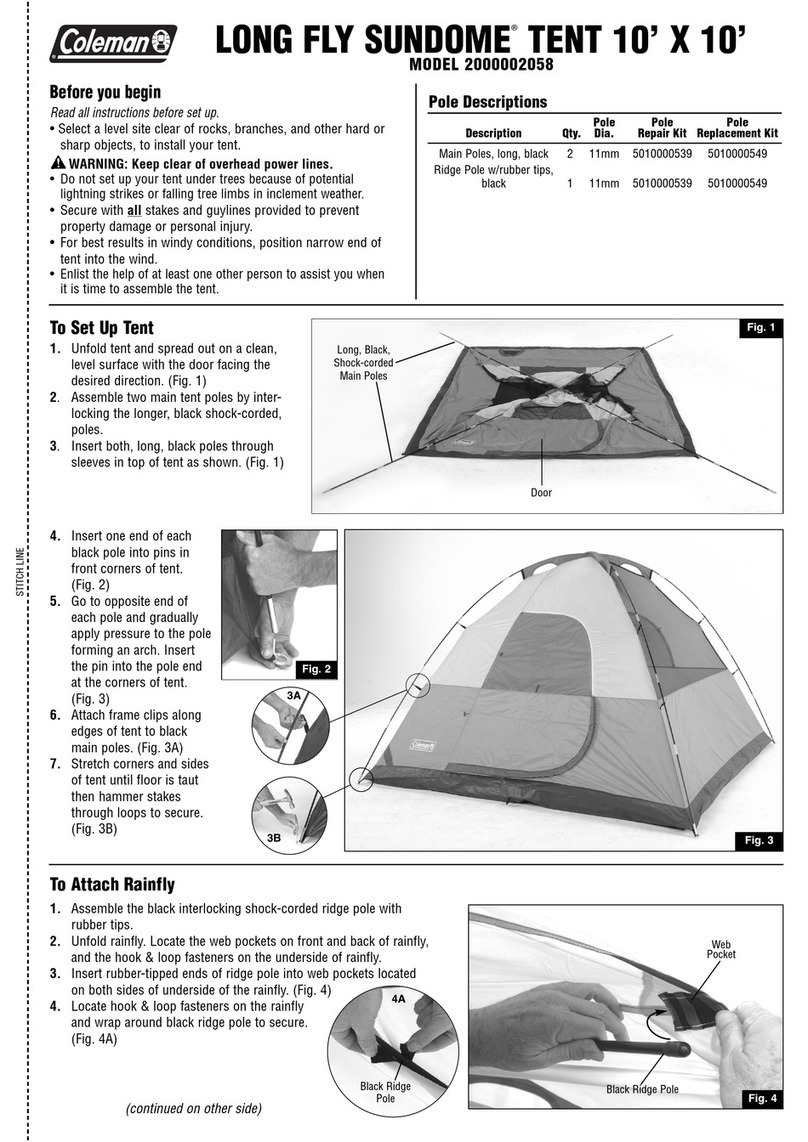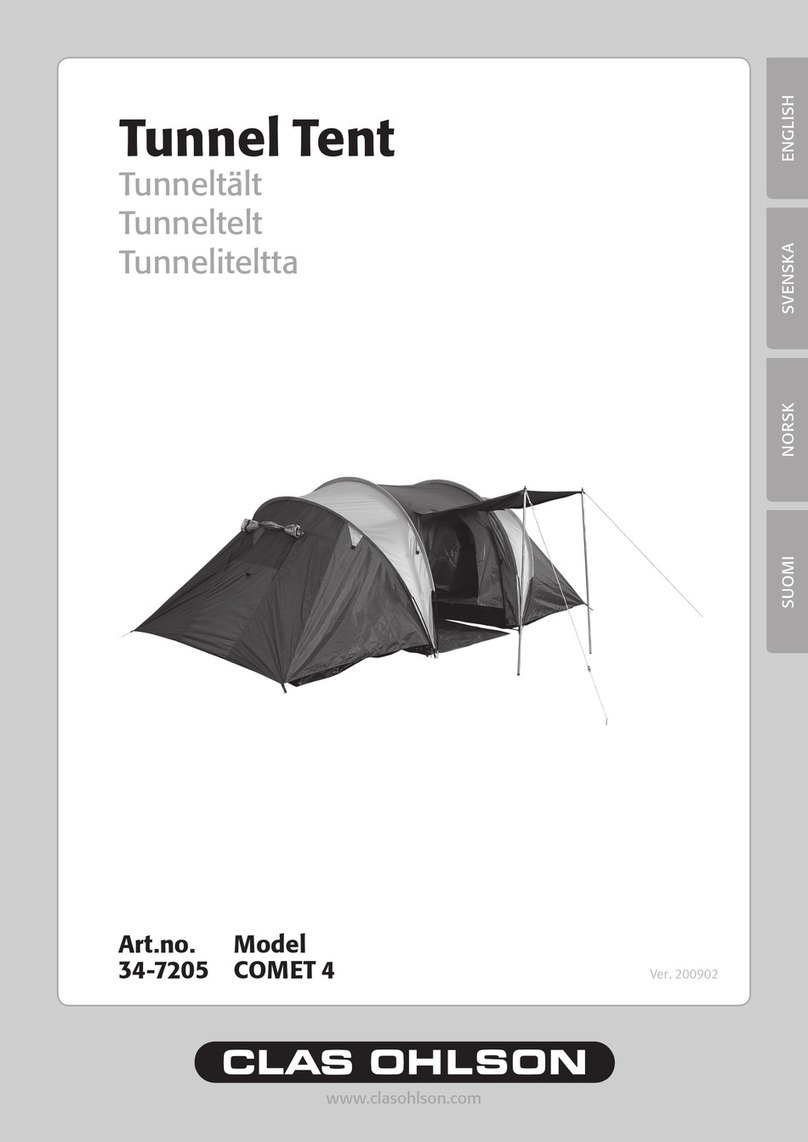
E. F. G.
7
WIND AND RAIN – IMPORTANT INFORMATION:
WIND!
Wind can cause the ratchet assemblies and stakes to loosen, or cause the poles to sink or shift through
constant movement and vibration — the tension of the tent will be negatively altered.
Follow these steps to provide extra security and safety during windy conditions:
• Very important, do routine maintenance checks — be sure to check proper tension regarding the
ratchet assemblies, throughout the day/event. This is critical, if your tent must stay up, in moderate
windy conditions.
• Blocking plates must be placed under ALL poles, to prevent the poles from sinking into the ground.
This will help insure proper tension is maintained between the tent top and the ratchet straps.
6 in. x 6 in. x 3/4 in. plywood is recommended—(use 12 in. x 12 in. x 3/4 in. for larger tents, see figure E).
• In the case of strong winds, remove any sidewalls. This will allow the wind to pass through the tent,
diminishing major upward pressure on the tent top.
• Additional security can be achieved by adding additional stakes and ropes/straps to corners—
and to the ‘wind side’ of the tent.
• When anticipating windy conditions, perform a soil test to determine proper staking:
1.) drive a large steel stake approx. 20 in. into soil, vertically
2.) measure the distance from the ground to the top of stake
3.) with a 16lb. sledge hammer, strike stake with an average blow (don’t over hit)
4.) measure the movement/hold strength: (0.2in./2500lbs) (0.3–.5in./1600lbs) (0.6–1.5in./800lbs)
(1.6–3in./400lbs) (3–6in./200lbs) (> 6in./100lbs) Double or triple staking might be necessary,
10in. behind primary stake (see figure F). [search web for: tent.IFAI tent staking handbook for detailed information]
• When SEVERE WEATHER is approaching, the TENT SHOULD BE EVACUATED— and TAKEN DOWN!
• Proper Setup Note:
Make sure all poles are vertical and form a ‘squared up’ rectangle.
30 wide and larger: use a Mason’s string — attach at the base of one corner pole, go around all
4 corners to form a box. Tighten the string — then align all side poles by having them touch the string.
Proceed by bringing these poles vertical and applying proper tension to each strap — start at the
middle of one of the short sides (2 people, same speed) and work around the tent, ending with
the middle of the other short side (see figure G). The person on the ‘wind side’ goes first.
Lastly, re-check the corner poles.
RAIN!
When rainwater collects on the tent canopy it causes 'ponding'— occurring in heavy weather conditions.
If the tent is not tensioned correctly, this issue will be made worse. Additional weight from the water
will cause the tent to sag — this may cause the poles and base plates to sink into the soil. In addition,
water saturated soil will cause the stakes to lose their holding power. When you combine loosened
stakes, added weight on the canopy and reduced tension on ratchet assemblies, the structure becomes a
safety hazard. IT IS THE TENT OWNERS RESPONSIBILITY TO ASSURE THE SAFETY OF ALL INVOLVED.
716 832-TENT (8368)
Place all
poles on
plywood
blocks
6in. x 6in or 12in. x 12in.
secondary
stake
primary
stake
person 1
person 2
start
string line
(20 x 40 tent)










